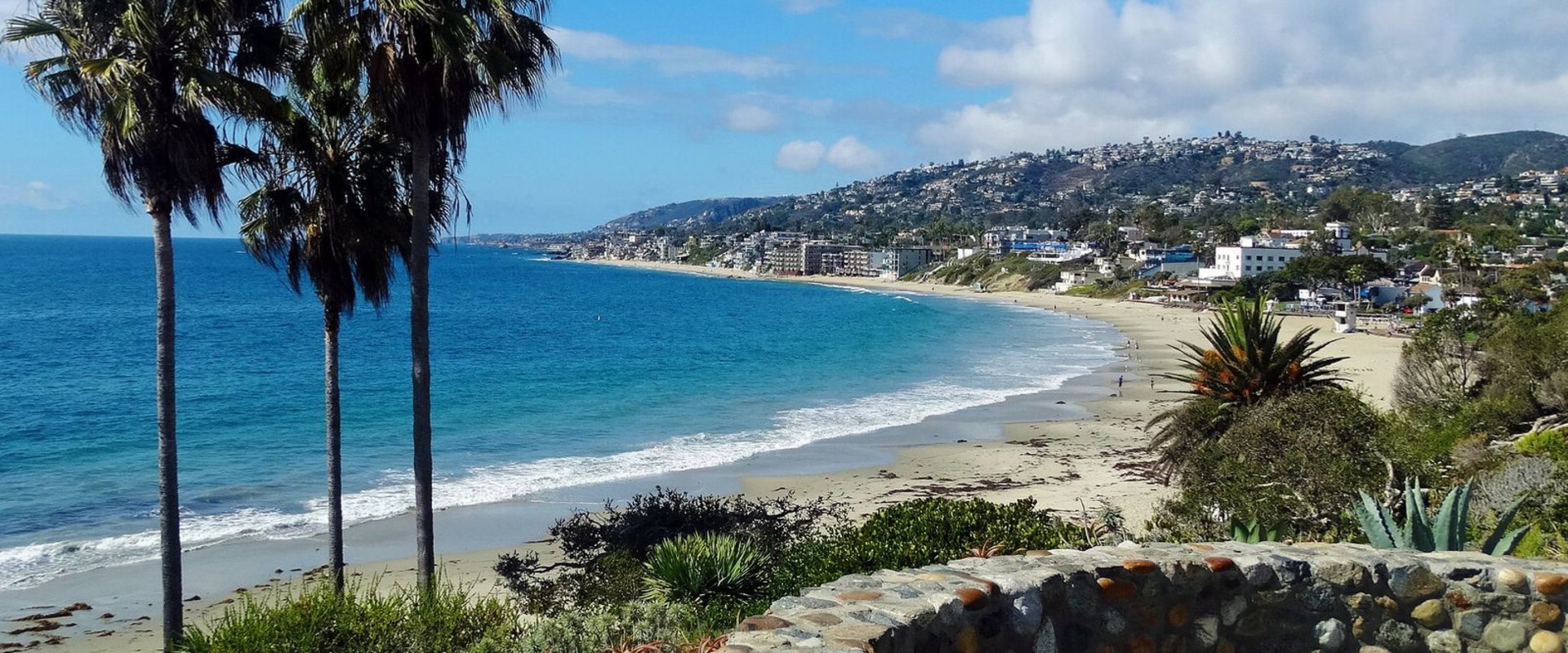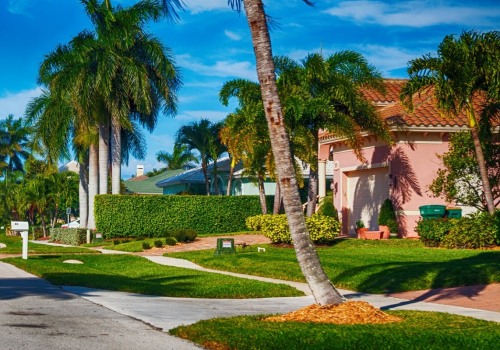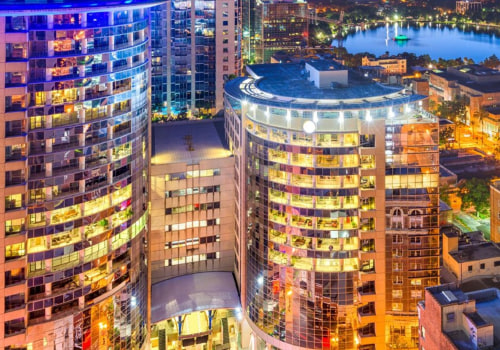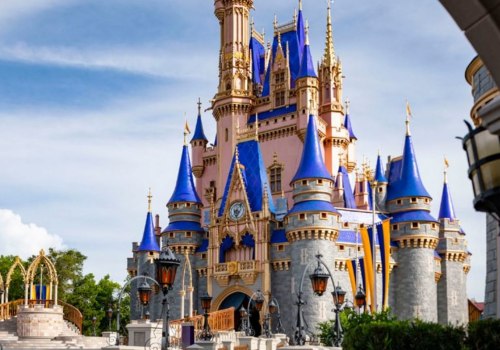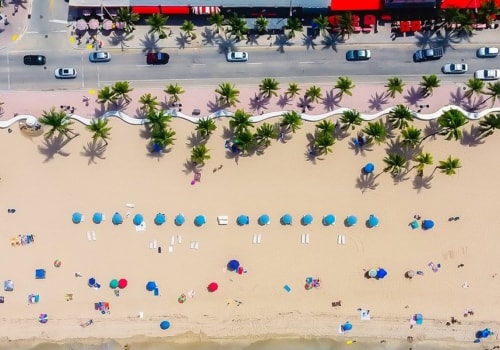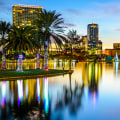My. Mi) and Osceola County (1, 506, 5 sq. The Orlando metropolitan area, commonly known as Greater Orlando, Metro Orlando, as well as for U, S. Purposes of the Census, since Orlando—Kissimmee—Sanford, Florida Metropolitan Statistical Area, is a metropolitan area in the central U.S.
UU. Its main cities are Orlando, Kissimmee and Sanford. The Office of Management and Budget defines it as composed of Lake, Orange (including Orlando), Osceola and Seminole Counties. By population, it is the third largest metropolitan area in Florida, the seventh largest in the southeastern United States, and the 22nd largest in the United States.
The MSA covers 4,012 square miles (10,400 km) of total area (both terrestrial and aquatic). WBO defines major cities (sometimes called major cities) based on population size and employment. In general, a major city has more non-residents who travel to the city to go to work than residents who leave the city to work. Greater Orlando is one of the most popular tourist destinations in the world thanks to the many theme parks in the area.
Famous attractions include Walt Disney World, SeaWorld Orlando and Universal Orlando. Millions of tourists visit these and other attractions every year. Other agricultural activities, particularly livestock farming, remain important parts of Central Florida's economy, but are now all located on the outer limits of the metropolitan area. Orlando is also a major food processing center.
Metro Orlando has served as a major aerospace and military defense center since World War II. The most prominent defense contractor in the area is Lockheed Martin, which operates both a laboratory and manufacturing plant in Orlando. The military presence began in the 1940s, with the opening of McCoy Air Force Base and the Orlando Naval Training Center. McCoy Air Force Base was a major hub for B-52 Stratofortress.
McCoy AFB split between the city and NTC Orlando in 1974, and NTC Orlando closed in the mid-1990s. McCoy Air Force Base is now the location of Orlando International Airport. Further north, in Sanford, Orlando Sanford International Airport was originally the Sanford Naval Air Station. The Tavistock Group, an investment company that owned 7,000 acres (2,800 ha) of land immediately southeast of Orlando International Airport, began to formulate new possibilities for its land use following the decline in tourism in the state.
Tavistock decided to use part of the land to establish a bioscience cluster. Beachline, Central Florida GreeneWay, East-West Expressway and Western Expressway are managed by the Central Florida Highway Authority. Florida Turnpike Enterprise, a special district of the Florida Department of Transportation. Once a stop along the Atlantic Coast Line railroad, Church Street Station has become an urban nightlife hub, while the station itself will serve as downtown Orlando's central SunRail stop.
Amtrak serves stations in the area in Kissimmee, Orlando, Winter Park, Sanford and DeLand. Sanford Station is the south terminal of the Auto Train, which transports people and their vehicles, without intermediate stops, directly to Washington, D, C. Orlando International (MCO) is a major city for JetBlue Airways and Southwest Airlines. AirTran Airways was headquartered in Orlando and had a major hub in Orlando, but merged with Southwest.
JetBlue Airways also has a training center known as JetBlue University, and is the main training center for JetBlue pilots, on-board crew, in addition to support training for their technical operations and customer service crew. JetBlue also provides general aircraft maintenance and installation and maintenance of LiveTV in Orlando. Orlando Sanford International (SFB) generally operates charter flights from Europe, although it is also a hub for the national small-town airline Allegiant Air and home to Delta Connection Academy, a pilot training school. In the combined statistical area, Daytona Beach International Airport and Leesburg International Airport also serve the area, and it is used by many tourists looking to connect directly to Daytona Beach's many local offerings, such as Daytona Beach Bike Week, Speedweeks and Spring Break.
It is located so that its tracks host the Daytona International Speedway, which makes it convenient for some fans to get to Daytona, see the Daytona 500 or Coke Zero 400 and then return home the same day. Daytona Beach International also serves as the main airport for pilot training at Embry-Riddle Aeronautical University. Municipal airports in the region include Orlando Executive Airport, Kissimmee Gateway Airport, Ormond Beach Municipal Airport and DeLand Municipal Airport. The extended area is also covered by The Daytona Beach News-Journal and Florida Today.
The city of Orlando is nicknamed City Beautiful, and its symbol is the Linton E. Allen Memorial Fountain, commonly known as Lake Eola Fountain in Lake Eola Park. Orlando International Airport (MCO) is the 13th busiest airport in the United States and the 29th busiest in the world. With the exception of theme parks, most major cultural sites, such as the Orlando Museum of Art and Dr.
The Phillips Center for the Performing Arts and world-renowned nightlife, bars and clubs are located in downtown Orlando, while most attractions are located along International Drive, such as Wheel at ICON. The city is also one of the busiest American cities for conferences and conventions; the Orange County Convention Center is the second largest convention center in the United States. Before being known by its current name, Orlando was known as Jernigan. This name comes from the first European permanent settlers, Issac and Aaron Jernigan, ranchers who moved from the state of Georgia and acquired land 2 miles (3.2 km) northwest of Fort Gatlin along the west end of Lake Holden in July 1843 under the terms of the Armed Occupation Act.
Aaron Jernigan became Orange County's first state representative in 1845, but his requests for additional military protection went unanswered. At least five stories tell how Orlando got his name. The most common stories are that the name Orlando originated in the story of a man who died in 1835 during a Native American attack on the area during the Second Seminole War. Several of the stories tell an oral story of the scoreboard for a person named Orlando, and the double meaning, Here lies Orlando.
One variation includes a man named Orlando who was passing by on his way to Tampa with a herd of oxen, died and was buried in a marked grave. At a meeting held in 1857, the debate on the name of the city had grown. Hull recalled how James Speer (a local resident and prominent figure in the stories behind Orlando's name) rose up in the heat of the argument and said, “This place is often referred to as Orlando's Tomb.”. Through a retelling of the story, it was believed that one of the original pioneers had found a marker of some kind, but others claim that Speer simply used the legend of Orlando Reeves to help push his plan to name the settlement after Shakespeare's character.
A second variation also places the story in 1835 during the Second Seminole War. This name comes from a rancher from South Carolina named Orlando Savage Rees. Rees owned a sugar mill and plantation in Volusia County, as well as several large properties in Florida and Mississippi. Rees sugar farms in the area burned down in the Seminole attacks of 1835 (the year Orlando Reeves allegedly died).
Later, Rees led an expedition to recover stolen slaves and cattle. In 1837, Rees also tried to stop a peace treaty with the Seminoles because it did not reimburse him for the loss of slaves and crops. The last variation has the city named after the protagonist of Shakespeare's play As You Like It. This account also has some validity in the sense that, as mentioned above, Speer was instrumental in changing the name of the settlement from Jernigan to Orlando, although he may have used the legend of Orlando Reeves instead of his real intention of using the character of Shakespeare.
According to another version of the story, Orlando may have been the name of one of its employees. One of the main streets in downtown Orlando is called Rosalind Avenue; Rosalind is the heroine of As You Like It, but this could also be a simple coincidence. In 1823, the Treaty of Moultrie Creek created a Seminole reservation that encompassed much of central Florida, including the area that would become Orlando. The Indian Expulsion Act of 1830 authorized the relocation of seminoles from Florida to Oklahoma, leading to the Second Seminole War.
In 1842, the Armed Occupation Act encouraged the settlement of whites in the area. Aaron Jernigan, from Camden County, Georgia, arrived the following year and settled near Lake Holden. The period from 1875 to 1895 is remembered as the Golden Era of Orlando, when it became the center of Florida's citrus industry. The period ended with the Great Freeze of 1894-95, which forced many homeowners to relinquish their independent citrus plantations, thus consolidating holdings in the hands of a few citrus magnates, who moved their operations south, mainly around Lake Wales in Polk County.
The freeze caused many in Florida, including many Orlandans, to move to other places, mainly north, California or the Caribbean. Orlando became a popular tourist resort during the years between the Spanish-American War and the First World War. In the 1920s, Orlando experienced extensive housing development during the Florida Earth Boom, causing prices to. During this period, dozens of neighborhoods were built in the vicinity of the center.
The boom ended when several hurricanes hit Florida in the late 1920s, along with the Great Depression. During World War II, several Army members were stationed at the Orlando Army Air Base and the nearby Pinecastle Army Air Field. Some of these military personnel stayed in Orlando to settle down and raise families. In 1956, aerospace and defense company Martin Marietta (now Lockheed Martin) established a plant in the city.
Orlando AAB and Pinecastle AAF were transferred to the United States Air Force in 1947, when it became a separate service and were redesignated as Air Force (AFB) bases. In 1958, Pinecastle AFB was renamed McCoy Air Force Base after Colonel Michael N. McCoy, former commander of Bombing Wing 320 at the facility, died in the crash of a B-47 Stratojet bomber north of Orlando. In the 1960s, the base subsequently became home to Strategic Air Command Bombing Wing 306, which operated B-52 Stratofortress and KC-135 Stratotanker aircraft, as well as detachment operations of EC-121 and U-2 aircraft.
Another important factor in Orlando's growth occurred in 1962, when the new Orlando Jetport, the forerunner of the current Orlando International Airport, was built from part of McCoy Air Force Base. By 1970, four major airlines (Delta Air Lines, National Airlines, Eastern Airlines and Southern Airways) offered scheduled flights. McCoy Air Force Base officially closed in 1975, and most of it is now part of the airport. The airport still retains the old airport code of the Air Force Base (MCO).
Today, the historic center of Old Orlando resides in downtown Orlando, along Church Street, between Orange Avenue and Garland Avenue. Downtown urban development and the central business district have rapidly shaped the downtown skyline during recent history. The current historic district is primarily associated with the neighborhoods around Lake Eola, but stretches west through the city to the Lake Lorna dune and north to the College Park neighborhood, where you can find centuries-old oak trees lining brick streets. These neighborhoods include the Downtown Business District, North Quarter, Parramore, Callahan, South Eola Heights, Lake Eola Heights, Thornton Park and College Park, and contain some of the oldest homes in Orlando.
Orlando is close enough to Patrick Space Force Base, Cape Canaveral Space Force Station, and Kennedy Space Center for residents to travel to work from the city's suburbs. It also allows easy access to Port Canaveral, a cruise terminal. Red Lobster, former subsidiary of Darden Restaurants, is headquartered in the center. Orlando's sports teams have jointly won two Arena Bowls (1998, 2000), two titles in ice hockey, three titles in minor league baseball and two titles in football.
Orlando also hosts the University of Central Florida (UCF) Knights college athletics teams, competing in Division I of the National Collegiate Athletic Association (NCAA) as a member of the American Athletic Conference (The American). Orlando, like other major cities, experiences traffic jams and traffic jams on a daily basis, especially when traveling from the northern suburbs of Seminole County south to downtown and from the eastern suburbs of Orange County to downtown. Heavy traffic is also common in the tourist district south of the city center. Peak hours (peak traffic hours) are usually mornings from Monday to Friday (after 7 am) and afternoons (after 4 pm).
There are several traffic counseling resources available to commuters, including downloading the Tele-Traffic app (available for iPhone and Android), dialing 5-1-1 (a free automated traffic advisory system provided by the Florida Department of Transportation, available by dialing 51, visiting the Florida 511 Web), listening to traffic reports on major radio stations, and reading electronic traffic warning screens (also called variable message signs, FDOT also provides information) on major roads and highways. Greyhound Lines offers intercity bus service from Orlando to multiple locations across the country. The Orlando Greyhound Station is located west of downtown Orlando. With a highly developed tourism industry and millions of visitors a year, the city of Orlando has multiple options for groups arriving and touring the city and its surroundings.
Some of the city's most respected local charter bus companies include ATC Buses Orlando, Mears Transportation, and others. The Lynx bus is the most used bus for local residents, but its frequency varies by route and time of day. Therefore, a convenient way to get to know the city of Orlando by bus is to hire a charter bus. Transportation between Orlando International Airport and various locations in and around Orlando is provided by airport shuttle services.
Several shuttles operate 24 hours a day, 7 days a week. The Central Florida County Map shows the locations of the Orange, Seminole, Lake, Osceola, Volusia, Polk, and Osceola Counties we serve. Central Florida is covered by up to sixteen counties, from the east coast to the west coast, and includes not only Orlando, but also the Tampa metropolitan area. There are seven county districts that cover the Orlando region, with Orange County being the main one.
Here is a map of the sixteen counties that cover central Florida. This includes the Deltona—Daytona Beach—Ormond Beach Metropolitan Statistical Area (Volusia and Flagler Counties) and the Lakeland-Winter Haven Metropolitan Statistical Area, FL (Polk County), as well as the micropolitan areas of The Villages (Sumter County) and Wauchula (Hardee County). The resort opened in October 1971, ushered in explosive population and economic growth for the Orlando metropolitan area, which now encompasses Orange, Seminole, Osceola and Lake Counties. The service is expected to substantially reduce traffic congestion along the I-4 corridor, especially between downtown Orlando and the suburban communities of Seminole and Volusia Counties.
We help homebuyers in Orlando find homes in more than 30 cities and towns in these 5 counties located on the central map of Florida. . .
